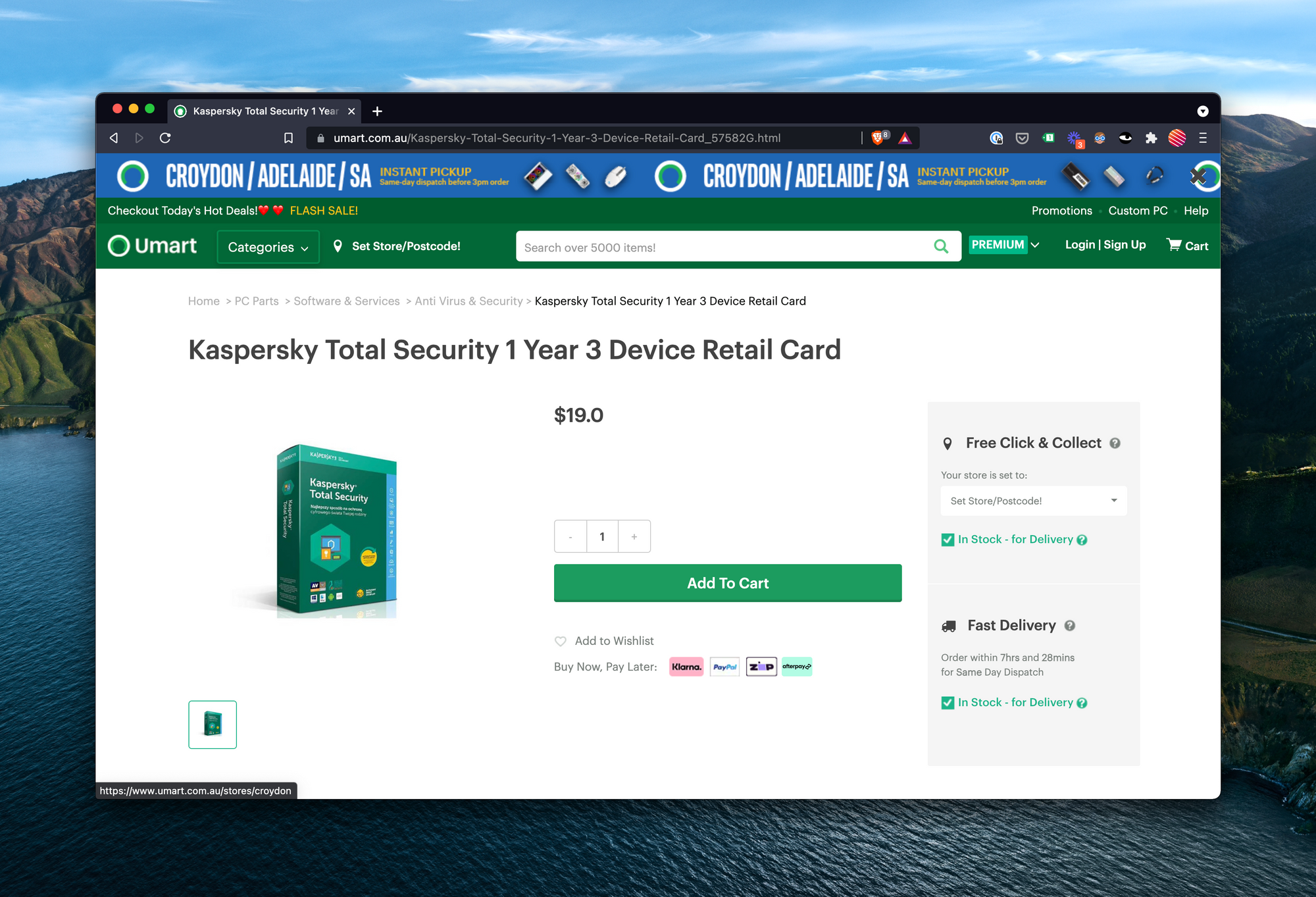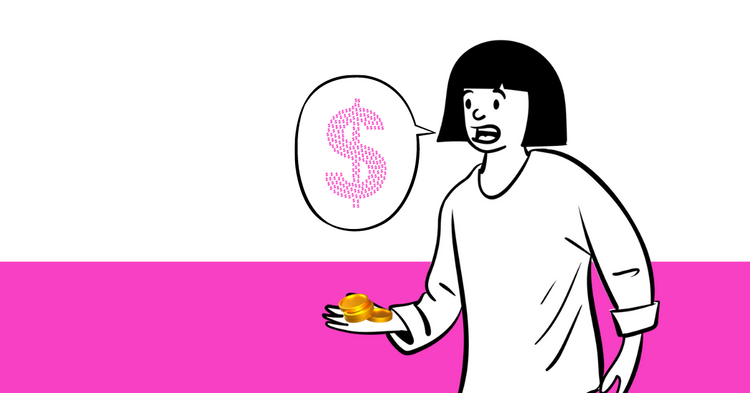What are distribution channels and how can they help grow a business?

There are so many ways to deliver products to customers that it's important to think strategically about how customers get their hands on your physical or digital products.
There are big differences in distribution channels for services, Saas, and physical goods but ultimately the thinking is the same: How do we put our product in the hands of our customers in the most valuable and profitable way?
What is a distribution channel?
Shopify defines a distribution channel like this:
Distribution channel refers to the network used to get a product from the manufacturer or creator to the end user.
I've seen many Saas marketers treat communications channels like Google Ads and SEO as their only distribution channels and I think that leaves out a lot of opportunity. Consumer packaged goods (CPG) and direct-to-consumer (DTC) brands are masters of multi-channel distribution, which includes online ads and search engine marketing for sure. From distributors to partnerships and other channels, Saas businesses could learn a lot from "old fashioned" businesses.
Direct and indirect distribution
You can sell product direct-to-consumer like Dollar Shave Club and Hims. You can also sell through distribution networks of interconnected partners like Gillette and General Mills.
Direct-to-consumer is fast. It usually shaves overhead costs, increases margins and speed of delivery. There are no middlemen between producer and customer, meaning DTC brands own the relationship and all the first-hand data that comes with it. DTC brands have to be great at manufacturing and logistics.
Indirect distribution leverages networks of buyers and distributors who have experience and knowledge about selling in different parts of the world. Partners like these often have skills manufacturers don't.
Example -- retail is a complex and competitive set of skills that changes by location. Manufacturers using indirect distribution rely on retailers in their network to have a retail core competency to complement their products.
Indirect distribution extends the availability of products by making them physically available everywhere. DTC brands rely on communications channels and fast shipping to be everywhere. An indirect distribution strategy puts physical products in the hands of consumers immediately, where they are now.
Software: direct and indirect, online and offline

Most software products sell direct, but not all software uses a strictly DTC model. You can still buy a box with a proof-of-purchase code and download link from the computer store down the street (if you still have a computer store down the street), but most software providers moved to the cloud and offer products as direct download or Saas.
Software uses a blend of indirect and direct distribution channels. I see Saas as a direct channel with a twist in that there is usually a third party hosting and providing access to the software. Amazon Web Services is a third-party host many Saas product leverage to distribute software to huge customer bases. Saas feels direct, but does leverage a channel.
Physical goods and digital goods
Regardless of distribution channel, a manufacturer has to market and sell their product. Remember this from above?
Saas providers often treat communications channels as distribution channels.
Communications channels are similar to distribution channels. They both deliver something to consumers. But distribution channels carry products while communications channels carry messages. Google Ads is not a distribution channel. It's a communications channel that leads to a distribution point.
Why does this distinction matter?
Strategy, or the lack thereof. Distribution can be a competitive advantage and give products entry to new markets. And before you say "communications channels can do the same," the distinction I want to add is that I'm talking about Saas entering big, mature, enterprise-level markets where competition is fierce and winners stand to gain Scrooge McDuck money.
Distribution can maximize exposure to enterprise markets where buyers often need help figuring out what they can and should buy. Enterprise problems are orders of magnitude bigger than small and medium business problems and if your software is going to help them, you often need distribution partners to identify how.
Communications channels continue to play a role, but they should be used to build awareness, answer questions of consideration, teach customers how to use your product, and delight them after the sale.
Distribution channels help Saas companies deliver on their promises. Channel Partners can be part of the distribution strategy. They can be Value Added Resellers (VAR) or they can leverage your products as part of a solutions package they sell as part of their bundled service.
Communications channels inform and build awareness. Distribution channels help products get into the hands of big customers who are ready to spend big money.
Recognizing that distribution is different from communications gives companies a strategic advantage. Distribution channels become that strategic advantage.
Quick note: This isn't a mature argument. It makes sense in my head, but I haven't been able to fully visualize the value yet.
Advantages of indirect distribution
Building a network of indirect distribution partners has several advantages:
- Separate capital expenditure -- the interconnected partners up and down the chain spend their money to promote your products
- Local knowledge -- local expertise is very useful, especially for global brands
- Retail core competence -- manufacturers often don't have it; let retailers focus on retailing while you focus on making kick-ass products
- Maximal distribution -- big companies rely on being everywhere and they need independent, indirect distribution to get that reach
- Synergies with other products within the company -- yes, "synergies", but before you roll your eyes consider that one company with multiple brands moving around the globe gains a lot of efficiencies and cost savings by strategically bundling and distributing product (i.e.: more profit per unit sold)
Advantages of direct distribution
The primary advantages of direct distribution are speed and margin. Selling direct is fast and cutting out the middleman usually means higher margins. But there are other ways direct distribution helps:
- Near real-time delivery -- fast fashion house Zara has distribution so dialed in that they don't have warehouses (and the costs that go with them) meaning consumers get goods fast
- Absence of retailers -- wholesale prices are a thing of the past if you cut out retailers and you're free to become the full-price retailer yourself
- Absence of competition -- there are no competitors on the shelf next to your brand and you set the terms of comparison between "Us" and "Them"
- The consumer data is yours -- this may be the biggest advantage because when you sell direct you also bring first-party data into your business, allowing you to produce real-time segmentation for marketing and sales decisions
Be aware of channel conflict
Channel conflict happens when a manufacturer sells through multiple channels and at least two of those channels compete to sell the same products.
This can happen online and offline, within a single company and across many. Different channels put your products in front of more people in more places. Distributors can easily come into conflict with one another if they're not managed well.
Let's look at a famously direct-to-consumer (DTC) brand that expanded to retail and may have created channel conflict by doing so.
Harry's, a company selling grooming products for men, started its life as a shiny new DTC. The company sold razors through subscriptions and skipped all middle men but the post office.
DTC brands don't have channel conflict. There is one distribution channel: direct. Consumers visit Harrys.com, buy razors, and wait for their blades to arrive. But being a hot brand in a space full of giants (think Gillette and Schick) meant that eventually Harry's would likely have to compete in the physical retail world.
Harry's has grown to be more than razors and its brand has helped it expand into grooming products now available at big box stores like Target and Walmart. Harry's has managed to avoid channel conflict through recommended standard pricing across its range.
Channel conflict could easily arise for a brand like Harry's because they still sell direct, they now sell presumably through a network of distributors, and they're sold in big box retailers who might be across the street from one another. Recommended standard pricing is just that - recommended. Target could slash prices to bring in more customers, which could lead Walmart to discount too.
I'm not saying that Harry's did anything wrong. Good for them. They've grown and that's awesome! I mention Harry's potential channel conflict here to help paint a complete picture.
Growing distribution may feel like a great thing because of the reach it gives you, but there are potential pitfalls if its not managed well.
For a more complete look at channel conflict and how to manage it, check this out from ecommerce agency The Good.
Omni-channel distribution: the mack daddy of distribution plans
If you're considering how to distribute your product, physical or digital, there are four ways to think about it:
- Mono-channel distribution is old school. Consumers know the one place to find your brand. You may have locked in agreements with a partner for sole rights to distribute and sell your products.
- Multi-channel distribution means consumers see your brand on multiple channels and those channels compete for attention. There is no cross-over between channels. For example, a buyer can look up a new car online, call the company, and visit a showroom in the same day without any of these channels having knowledge of the customer's previous interactions with the brand.
- Cross-channel distribution is similar to multi-channel distribution with a major difference: the channels are now connected, allowing consumers to cross over between channels in a seamless way. If you have a Saas product, an example of cross-channel distribution could be capturing a customer email address on your website and sending them an email to schedule a time to talk in person at an upcoming trade show. The buyer's data goes with them through their buying process.
- Omni-channel distribution is cross-channel on steroids. Omni-channel distribution means consolidating brand touch points across channels and making buyers feel like their entire buying process is unique to them. Customer data is carried from one touchpoint to the next, creating personalized interaction after personalized interaction.
Omni-channel customers are worth more. According to this Harvard Business Review study, omni-channel customers are more valuable on multiple counts:
After controlling for shopping experience, [omni-channel customers] spent an average of 4% more on every shopping occasion in the store and 10% more online than single-channel customers. Even more compelling, with every additional channel they used, the shoppers spent more money in the store.
I'd argue that the same would be true for Saas and digital goods. The more touchpoints customers have, online and offline, the more valuable they are to your company. I like to think of it like this:
Digital x Physical > 2xDigital OR 2xPhysical
WTF does that mean? It means that combining online presence with offline presence (Digital x Physical) produces greater value than simply doubling down on one or the other (2xDigital OR 2xPhysical). Investing in omni-channel distribution that blends digital and physical will lead to more valuable customers.
When you're planning your distribution, remember...
- It's important to understand how distribution channels work and what each strategy means for your business.
- Omni-channel customers are more valuable to your business, so it's a big strategic advantage if you can provide a smooth, personalized buying journey for your customers.
- Communications channels are a part of digital product distribution, but Digital x Physical > 2xDigital OR 2xPhysical.
This is just one post in a series on marketing strategy. Here are the rest:
- How epic companies like Nike and Amazon grab advantage with market orientation
- How to do market research for a startup (from a Saas product marketer)
- Market segmentation? Unwrap the best way to nail your marketing strategy
- Your next market targeting strategy must highlight these two things
- What is market positioning and where does it fit into your marketing strategy?
- The 4 laws of marketing objectives that will inspire your team
- How to build successful products your customers want to buy
- Harvesting value: How to price Saas and other products better
- How to increase your ROI by 35% with integrated marketing campaigns



